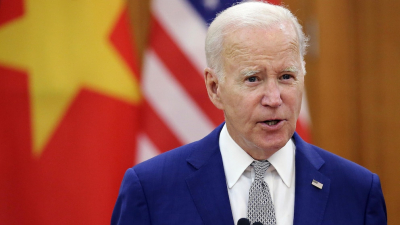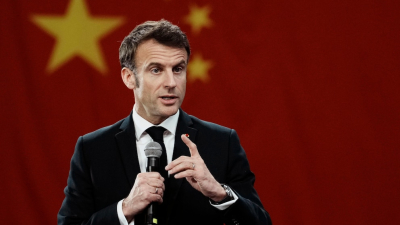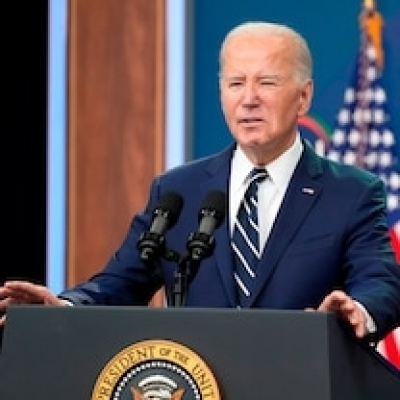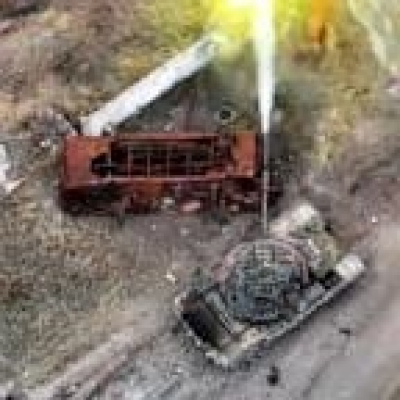Eyewitness to Tragedy: Livestreaming and the New Role of Bystanders
CHARLOTTE, N.C. -- When Saing Chhoeun found himself locked out of his Charlotte, North Carolina home on Monday, he had no idea he would become an inadvertent witness to a harrowing standoff. As law enforcement, armed with high-powered rifles, descended into his yard and garage, using a car as a shield against a barrage of gunfire from a neighboring house, Chhoeun instinctively reached for his phone and began livestreaming the unfolding chaos.
By the time the ordeal concluded, five lives, including those of four officers and the shooter, were lost, marking one of the deadliest single-day incidents for U.S. law enforcement since 2016. Yet, amidst the chaos and danger, Chhoeun's actions exemplified a shifting trend – the willingness of smartphone-wielding bystanders to document crises as they happen.
This inclination to document rather than flee represents a significant evolution in the role of bystanders in the digital age, experts note. Karen North, a professor of digital social media at the University of Southern California Annenberg, observes that while traditional notions of bystander responsibility in crises have often been murky, the ubiquity of smartphones has introduced a new dynamic.
It’s become sort of a social norm," North explains. "If you see something, start recording.
For Chhoeun, the decision to document the standoff was borne out of circumstance. Blocked from leaving for work by U.S. marshals, he found himself huddled for safety in his garage, keys in the ignition, recording with one hand while desperately knocking for his son to let him in with the other. Reflecting on his actions, Chhoeun acknowledges the unlikely turn of events that led him to become a witness to tragedy.
Rissa Reign, a neighborhood youth coordinator, found herself similarly drawn into the unfolding events. While cleaning her house, the sound of gunfire compelled her to investigate, underscoring the magnetic pull that crises exert on those nearby.
As technology continues to reshape the landscape of bystander intervention, the line between passive observer and active participant blurs. In an age where smartphones serve as both lifelines and lenses, the role of the bystander takes on new dimensions, with each recording potentially bearing witness to history.
Empowering Communities: The Impact of Livestreaming on Crisis Perception
As sirens pierced the air, Rissa Reign instinctively reached for her phone, intending to share the unfolding events with her community on Charlit, a Facebook group boasting 62,000 members dedicated to local news and updates. Little did she know, the situation was far more grave than she initially realized, a realization that dawned upon her as a SWAT vehicle rolled up behind her.
What began as a simple desire to keep the community informed quickly escalated into a stark realization," Reign recalls. "Suddenly, I found myself thrust into a situation of immense magnitude.
For Reign, livestreaming served as a tool to bridge the gap between perception and reality, offering an unfiltered glimpse into the unfolding chaos. "It's one thing to read or hear about an incident in the news, but witnessing it firsthand brings a stark sense of reality," she reflects. "It's a visceral reminder that these events are not distant occurrences but stark realities that unfold in our own communities.
Mary Angela Bock, a media professor at the University of Texas at Austin, delves into the myriad motivations behind recording such events. While some may be driven by a morbid fascination with violence or the prospect of capturing sensational content, Bock emphasizes the noble intentions behind citizen recordings.
Recording police or government activity isn't just about voyeurism; it's about exercising citizenship," Bock explains. "By bearing witness to these events, individuals play a crucial role in fostering accountability and transparency within our society. We're all in this together.
Yet, the act of recording amidst a crisis is not without its challenges. Bock acknowledges the complexities inherent in capturing a complete picture of events, particularly in fast-paced and volatile situations. While video evidence can serve as a powerful tool in corroborating accounts, it remains just one piece of the puzzle.
Multiple perspectives enrich our understanding of an event," Bock emphasizes. "By respectfully recording from a safe distance, individuals contribute to a more comprehensive narrative, enabling us to triangulate the truth from various vantage points.
As federal courts uphold the right to record police activities in public spaces, the role of citizen journalism in shaping public discourse has never been more pronounced. Through the lens of livestreaming, communities are empowered to confront the harsh realities that unfold within their midst, fostering a culture of accountability and collective responsibility.
The Psychological Impact of Livestreaming on Crisis Response
Stephen Dubovsky, a distinguished professor emeritus of psychiatry at the State University of New York at Buffalo, sheds light on the psychological dynamics at play for individuals who find themselves drawn to livestreaming during crises. Dubovsky posits that for those facing imminent danger, the act of documenting events in real-time may serve as a coping mechanism, offering a sense of perceived safety through a digital lens.
When you're out there, potentially at risk, viewing the situation through the screen of your phone creates a layer of detachment," Dubovsky explains. "It's as if you're one step removed from the immediate danger.
In the livestream captured by Chhoeun, the harrowing reality of the standoff unfolds before viewers' eyes. Agents take cover behind vehicles, while others are seen crouched by fences as bullets rain down around them. For Chhoeun, the experience evoked a profound sense of sorrow for law enforcement personnel thrust into harm's way in the line of duty.
It's heart-wrenching to witness the sacrifice made by these officers," Chhoeun reflects somberly. "They didn't choose to confront death in my backyard; they were simply doing their job. Yet, they paid the ultimate price, leaving behind grieving families.
The emotional toll of such events extends beyond those directly involved, resonating with communities far and wide. As Dubovsky suggests, livestreaming offers a means of processing these traumatic events, allowing individuals to bear witness from a safe distance while grappling with the harsh realities of violence and loss.
As the nation grapples with the aftermath of such tragedies, the role of technology in shaping our responses to crisis situations warrants further exploration. Through the lens of livestreaming, we confront not only the immediacy of danger but also the resilience of the human spirit in the face of adversity.
Willingham reported from Charleston, West Virginia.
In conclusion, the phenomenon of livestreaming during crisis situations underscores the complex interplay between technology, psychology, and community resilience. As individuals navigate the tumult of danger and uncertainty, the act of documenting events in real-time serves as both a means of connection and a buffer against the harsh realities of violence. Yet, amidst the sobering scenes captured on screen, there remains a poignant reminder of the sacrifices made by those on the front lines of law enforcement, whose unwavering dedication too often culminates in tragedy. Moving forward, it is imperative that we continue to explore the multifaceted implications of livestreaming, recognizing its potential to shape our perceptions, foster empathy, and galvanize collective action in the pursuit of a safer, more compassionate society.











